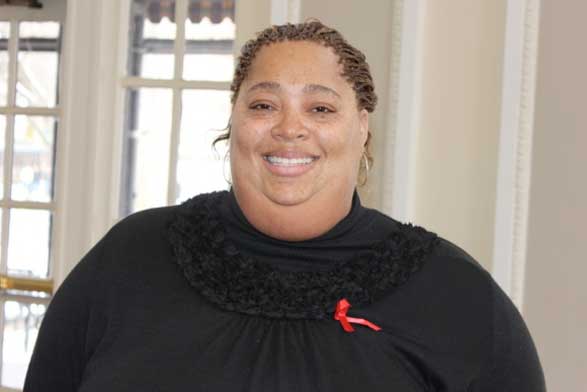
CLARISSE JORDAN
In the late 1980s when Clarisse Jordan contracted HIV, it was known to her and many others as the “gay White male disease.” She wasn’t gay, White, a prostitute, drug user, or any of the other identifiers used in the early days to categorize those living with HIV/AIDS.
She’d only had one partner, her boyfriend, but when her family discovered he had been diagnosed with HIV, her mother urged her to get tested.
“I went in and my doctor took the blood and it took a month and a half for the results to come back,” Jordan said. “I wasn’t worried.”
Today, Jordan is one of the more than 510,000 African-Americans living with HIV/AIDS in the United States and while Blacks make up 12 percent of the population, they represent 44 percent of total HIV/AIDS cases. She shared her story as part of the National Black HIV/AIDS Awareness Day event hosted by the University of Pittsburgh Graduate School of Public Health’s Minority Student Organization on Feb. 7.
“I’ve literally almost died 11 times. My mother never came to see me,” Jordan said after explaining how her mother kicked her out after she was diagnosed with HIV. “I’ve been positive for 28 years and my mother is just now able to ask me about my health.”
Jordan was in and out of the hospital from 1997 to 2006, but today her viral load, which measures the severity of the virus, is undetectable. Her t-cell count is high, which signifies the strength of her immune system, and she is down to 12 pills a day from her previous medicinal cocktail of 27.
“There’s nothing fun about having HIV; there is nothing pretty about it,” Jordan said. “The medicine basically makes you feel like you’re going crazy. Those are the side effects for me.”